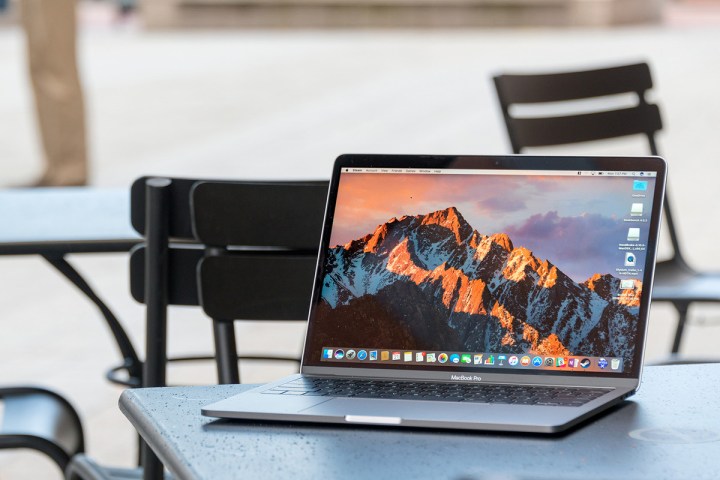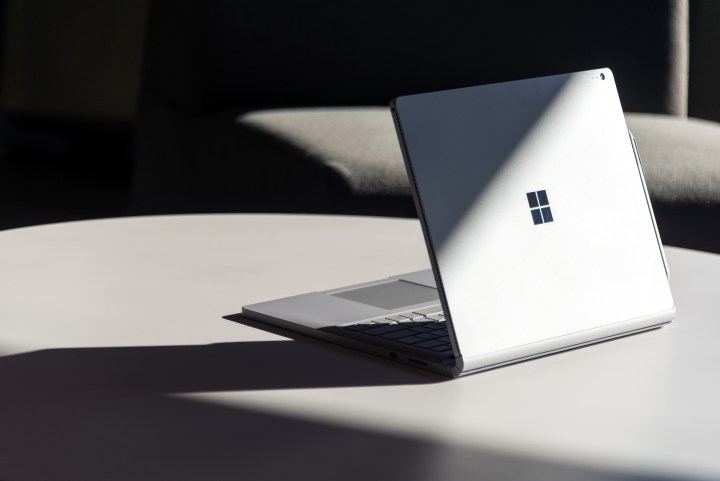Buying the best laptop is about more than looking at the specs. Although individual laptop reviews and the spec sheet play a critical role in buying a laptop, there are still common pitfalls that laptop buyers come up against. To help you avoid a healthy dose of buyer’s remorse, we rounded up 12 common laptop-buying mistakes to avoid while looking for your next machine.
Buying the cheapest available laptop
There are some great budget laptops out there, but just because they’re cheap, that doesn’t mean they’re going to do the job you want or have all the features you need.
Let’s say you’re deciding between a dual-core and quad-core processor. You want to run many applications at once, but you chose the dual-core processor because it’s a little less expensive. Now you have a system that’s not as powerful as your needs demand, and that problem will plague you until it’s time to buy again.
Rather than jumping for the lowest price, it’s best to find the laptop that will actually serve your needs and then cross-reference that with your budget.
Paying too much

Conversely, the the most expensive laptops might tick every box, but if you pay for features or hardware you don’t need, you’re just wasting your money.
The chances are good that if a laptop strains your budget, it has something that you don’t need. A new MacBook Pro with top-specifications can cost over $6,000 — but very few people need 4TB of storage space on their laptop. You can get yourself the same machine with the same specifications apart from less storage for half that price, and you can get plenty of cheap storage from an external drive.
Gaming laptops can be notoriously expensive, but you don’t need all that hardware if you’re only playing indie games. Buy what you need, and try not to go overboard.
Buying a laptop “for today”
It’s an old bit of advice, but it still holds. Unless you are obsessed with getting the latest tech, a new laptop should last a few years, and likely more if you want to save money on another purchase. Instead of buying a laptop exclusively for your needs right now, you should buy one for where you think you’ll be in a couple of years.
You might be tempted to opt for a base model for its low price tag, with something like 4GB of RAM and a 128GB solid-state drive. That’s going to limit its long-term appeal, though, because it will quickly run out of storage space and may not handle multiple applications well. Going for a step-up model with a bigger drive and more RAM is probably a good idea.
Ignoring ports and compatibility

Not all laptops include the ports you depend on. Many modern laptops, like our favorite Dell XPS 13, only have Thunderbolt 3 and USB-C ports. If you need USB-A or an SD card reader, make sure your chosen laptop has those specific ports before buying, or budget for an adapter.
Opting for the highest available resolution
A device boasting a 4K display is certainly worth more than a cursory glance, but it’s not always the right choice, as smaller screens don’t let you enjoy the full benefit of the higher resolution.
Worse still, 4K screens can have a big impact on your device’s battery life. Many 4K notebooks have lackluster endurance with higher resolution screens, and really, you won’t see many benefits. Unless you’re buying a super high-end gaming laptop or one with a huge screen, we’d recommend 1080p for savings on your wallet and battery life.
Not trying before buying
If you can, always give the laptop you’re considering a proper test drive before buying. Many everyday laptops are available for testing at big brick-and-mortar stores such as Apple, Best Buy, and the Microsoft Store, allowing you to fiddle with the touchpad, keyboard, software interface, and other components that substantially differ from model to model.
It’s easy to overlook the importance of features absent from the spec sheet, such as the touchpad’s responsiveness or the visibility of a glossy screen in daylight, and there’s just no substitution for getting a real hands-on feel of what it’s like to use.
If that’s not possible, buy from an online store with a strong return policy.
Thinking size isn’t important

A bigger display allows for a more expansive and often better viewing experience, but it also cuts into the portability factor. A laptop’s size often determines the size of the keyboard and trackpad, meaning you’ll likely be cramped when opting for a laptop measuring less than 13 inches.
The best way to figure out what you need is to consider how you’ve used laptops in the past. A smaller ultrabook may be a viable option for frequent travelers, but for those looking for a standard laptop, you’ll probably want to opt for one with a 13.3- or 14-inch screen. If you rarely leave your home with your system, consider a 15.6-inch model for maximum screen real estate.
Becoming obsessed with one specification
Tunnel vision is bad news when buying a laptop. While it’s fun to pit spec sheets against each other, avoid picking out one particular specification as your favorite and only looking at that factor. While you should have a baseline specification in mind — to ensure that you get the performance you need — don’t obsess over maximizing any single specification.
It’s easy to be excited about paying a little extra for double the RAM, for example, but most people don’t need more than 8GB unless you are using some serious software for work purposes.
Likewise, don’t become obsessed with battery life, resolution, or processor speed. If you’re on a budget — and most people are — you’ll need to learn to balance a variety of hardware. Ensure the laptop you want has the features and hardware you need — anything else that comes in under budget is just a bonus.
Not buying enough power
Ultrabooks have risen to become one of the most popular types of laptops, and it can be very tempting to assume they are the best choice for you automatically. They’re lightweight, small enough to fit easily into a briefcase or backpack, and the prices of many models — especially Chromebooks — are some of the lowest around. What’s not to love?
While most people will find the performance more than enough, creatives and professionals might need workstation-class hardware to handle the intensive software needed for their job. In particular, you may need something with a powerful graphics card, while most 13-inch ultrabooks use an integrated one.
Assuming a 2-in-1 is the same as a laptop

Tablets, 2-in-1s, and laptops are distinct categories. They aren’t interchangeable. While you can perform many tasks with a tablet and keyboard as you can with a laptop, the similarities soon end. Tablets remain far more constricting when it comes to multitasking, fast web browsing, using complex apps, or running demanding software. Their keyboards can be overly cramped, too (Microsoft’s Surface Go has this problem).
Just because something has a screen and a keyboard doesn’t mean it can do everything a laptop can. This is the opposite mistake of getting focused too much on one spec — if you ignore all the specs, you’ll start making assumptions about what the machine can do, and that’s dangerous territory.
Misunderstanding laptop graphics
Laptop graphics are important if you plan on using your laptop for a lot of entertainment or gaming, but their graphics systems aren’t always well understood. Don’t just look at the amount of video memory in gigabytes (GB) when comparing graphics cards because this does a poor job of telling the full story.
Instead, first look to see if the GPU is integrated, discrete, or (more rarely) a combination of both. An integrated GPU connected to the processor is fine for most average laptop tasks, and it’s widespread, especially in more affordable laptops. But if you want the best performance you can get, you will want a powerful discrete GPU — and as with desktops, the most popular options are from Nvidia and AMD. Pay attention to how much VRAM is specifically allocated to the discrete GPU when making comparisons, as well as whether the GPU is a special edition (lower power) version, like Nvidia’s Max-Q variants.
Check out our guide to PC and laptop graphics for more information.
Focusing too much on storage space

Most of the industry has jumped on SSD storage, but you can still find laptops with traditional hard drives kicking around your local Best Buy or Micro Center. Spinning hard drives are cheaper, so you’ll often find laptops with more storage space for less money. But an SSD with a lower capacity is almost always better.
It’s important to remember that SSDs are much faster than spinning hard drives and can make a huge difference to your system boot times and how snappy and responsive they feel. Opting for less, faster storage will make sure you get a laptop that feels modern and won’t hold you back, whatever you’re doing.
If you need more space, external hard drives are a dime a dozen, and there’s no shortage of excellent cloud storage options for storing videos, photos, and music. A 256GB or 512GB SSD should be enough for most people when combined with an external hard drive or cloud storage.
The bottom line
However, it’s smart to remember that the “best” kind of laptop varies from person to person. Your particular preferences, needs, and even aesthetic choices will determine which laptop is really best for you. Of course, you will still want to make an informed choice, so read up on reviews, do some research, and compare any data before you buy. That way, when you finally do get your new laptop, you’ll know the products that make sense for you and work with your budget. A little bit of research can also go a long way in saving money, so spend some time looking around for the best price or deals. Try to plan your purchase around those massive sale days, like the laptop deals you can find during Black Friday, for instance.
Here at Digital Trends, we work to set our readers up for success in every way possible. Our goal is to arm you with the latest information, best deals, and well-thought-out reviews of products. We decide what we wish to cover independently, and we always keep budget-flexible items in mind. That said, the prices, details, and availability of each product or deal is liable to change. Always double-check those particular features before swiping your credit card.
Digital Trends earns a commission if you buy certain products through our links, which helps support the work we do for our readers.





